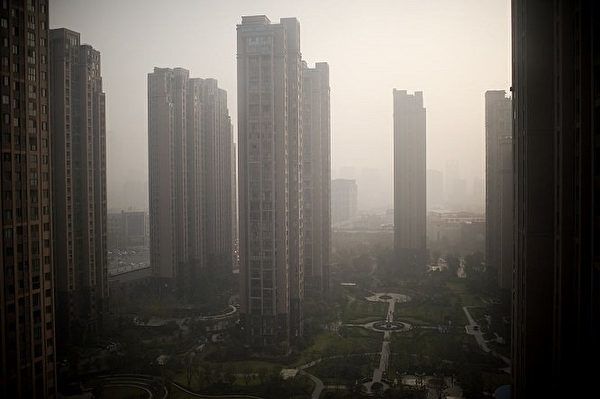According to official data released by the Chinese Communist Party on November 14th, in October, the overall selling prices of residential properties in various cities across China have decreased, and the national real estate development prosperity index has also dropped to a lower level.
The National Bureau of Statistics of the Chinese Communist Party released the statistical data on the changes in selling prices of residential properties in October 2025 on its official website. The data shows that in 70 major and medium-sized cities in China, the selling prices of residential properties in various cities have decreased both month-on-month and year-on-year.
In the first-tier cities, the selling prices of newly constructed residential properties decreased by 0.3% month-on-month, with Shanghai seeing an increase of 0.3% while Beijing, Guangzhou, and Shenzhen experienced decreases of 0.1%, 0.8%, and 0.7% respectively. In second-tier cities, the selling prices of newly constructed residential properties decreased by 0.4% month-on-month, while in third-tier cities, the decrease was 0.5%, expanding by 0.1 percentage point.
In October, the selling prices of second-hand residential properties in first-tier cities decreased by 0.9% month-on-month. Specifically, Beijing, Shanghai, Guangzhou, and Shenzhen saw decreases of 1.1%, 0.9%, 0.9%, and 0.9% respectively. In second-tier cities, the selling prices of second-hand residential properties decreased by 0.6% month-on-month, while in third-tier cities, the decrease was 0.7%, expanding by 0.1 percentage point.
Compared to the same period last year, the selling prices of newly constructed residential properties in first-tier cities decreased by 0.8% year-on-year, expanding by 0.1 percentage point from the previous month. In second-tier cities, there was a 2.0% year-on-year decrease, and in third-tier cities, a 3.4% year-on-year decrease, consistent with the previous month.
Regarding second-hand residential properties: in first-tier cities, the year-on-year decrease in selling prices was 4.4%, expanding by 1.2 percentage points from the previous month. Specifically, Beijing, Shanghai, Guangzhou, and Shenzhen saw decreases of 4.7%, 3.4%, 6.4%, and 3.3% respectively. In second-tier cities, the year-on-year decrease was 5.2%, expanding by 0.2 percentage points, while in third-tier cities, it remained at a 5.7% year-on-year decrease.
Additionally, according to the data in the report on the basic situation of the national real estate market from January to October 2025 released by the Bureau of Statistics on the same day, the national real estate development investment in mainland China reached 7.3563 trillion yuan (RMB) between January and October, marking a 14.7% year-on-year decrease; of this, residential investment amounted to 5.6595 trillion yuan, a decrease of 13.8%. The construction area of real estate development enterprises decreased by 9.4% year-on-year, with the residential construction area also decreasing by 9.7%. The newly started construction area decreased by 19.8%, out of which the residential new construction area decreased by 19.3%. The completed construction area decreased by 16.9% (with a decrease of 18.9% in residential completion area).
In the same period from January to October, the sales area of new commercial housing decreased by 6.8% year-on-year; with the sales area of residential properties decreasing by 7.0%. The sales volume of new commercial housing decreased by 9.6%, of which residential sales decreased by 9.4%. Real estate development enterprises received a total funding of 7.8853 trillion yuan, marking a 9.7% year-on-year decrease, with domestic loans decreasing by 1.8%; utilization of foreign capital decreasing by 37.5%; self-raised funds decreasing by 10.0%; deposits and advances decreasing by 12.0%; and individual mortgage loans decreasing by 12.8%.
The data reveals that in October of this year, the real estate development prosperity index (National Real Estate Prosperity Index) was 92.43, a decrease of 1.47 from the peak of 93.9 in March.
The report explains that the national real estate development prosperity index uses 2012 as the base year, with a growth level set at 100. Typically, a score of 100 is considered the most suitable level of prosperity, with levels between 95 and 105 being moderate, below 95 indicating lower prosperity, and above 105 indicating higher prosperity.
In China, the months of September and October are known as the peak season for real estate sales, often referred to by the industry as “Golden September, Silver October.” During this period, real estate developers usually launch numerous promotional activities to attract customers. However, this year’s data indicates that the traditional peak season of “Golden September, Silver October” did not perform as well as expected.

